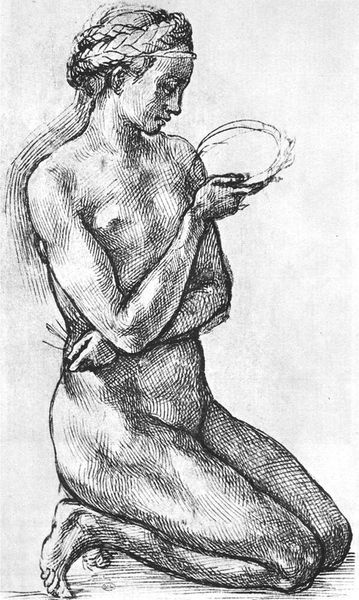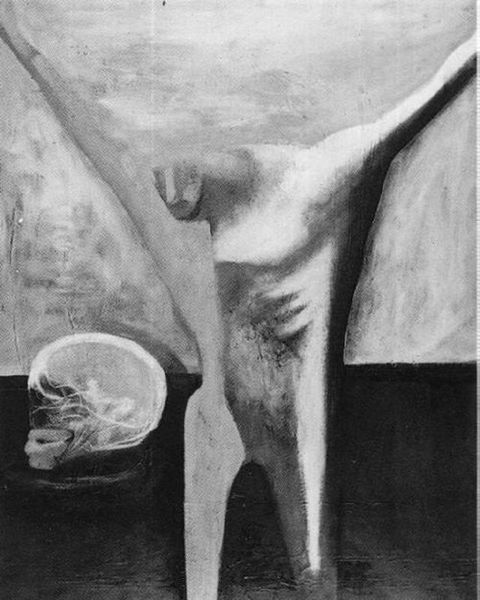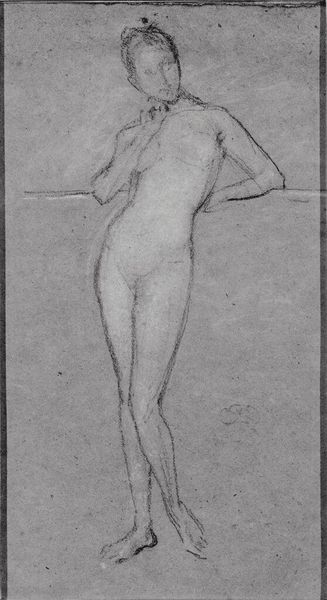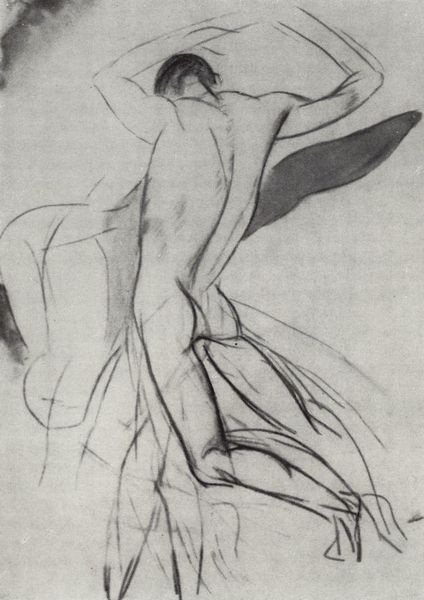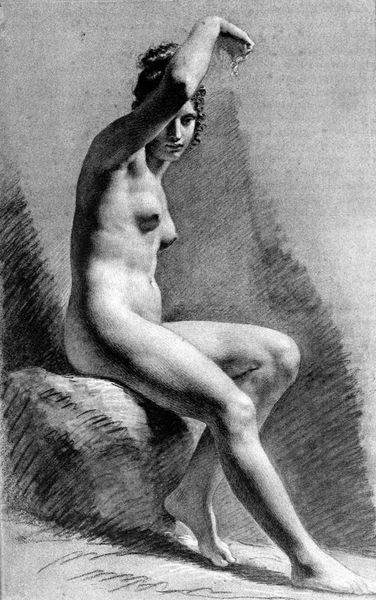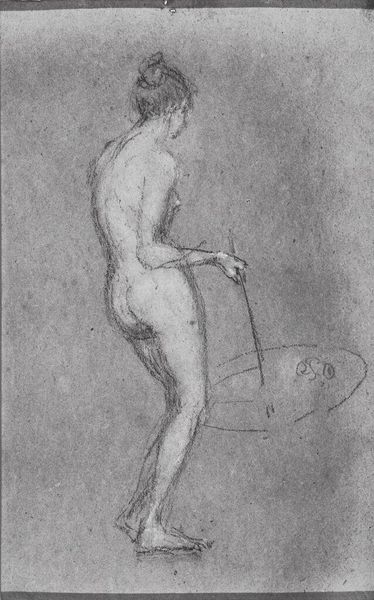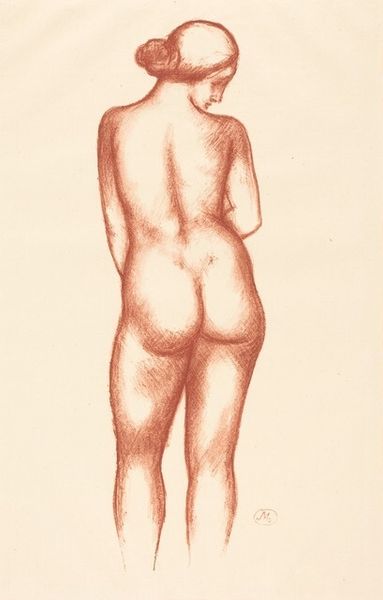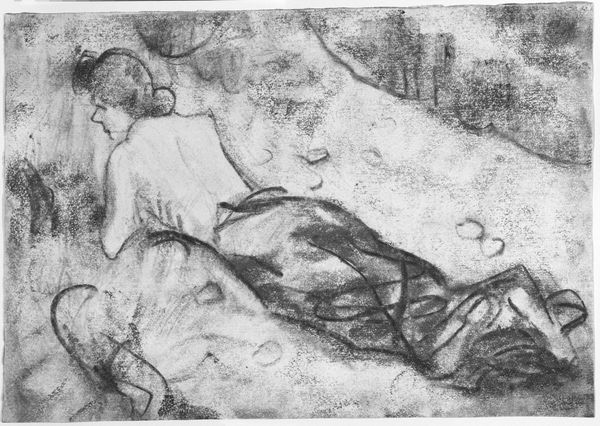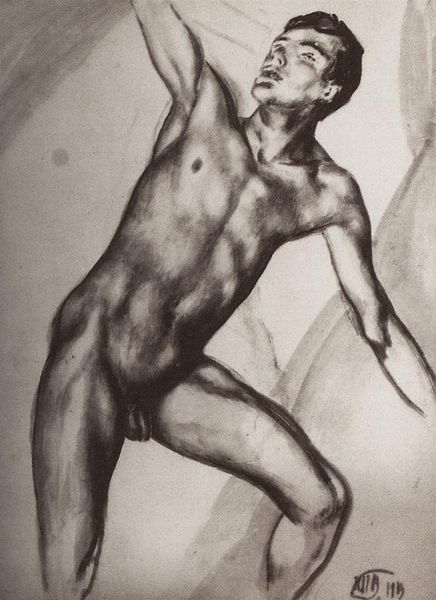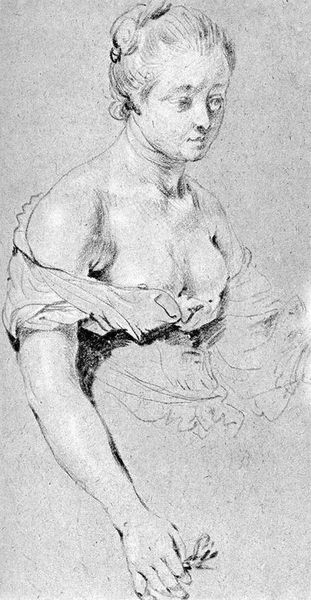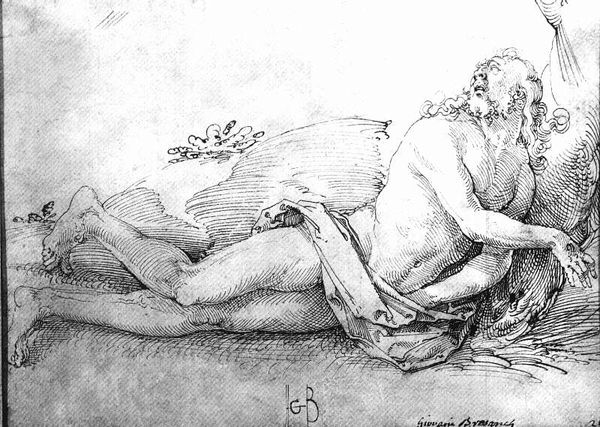
drawing, pencil
#
portrait
#
pencil drawn
#
drawing
#
pencil drawing
#
pencil
#
academic-art
#
nude
Dimensions: 16.2 x 25.2 cm
Copyright: Public domain
Curator: Immediately, the figure's languid pose and distant gaze convey a sense of detached melancholy. It is almost theatrical, as if the globe were a prop. Editor: I find myself considering the material construction of this artwork: "Two frontispiece (Sitting on the globe)," by James Tissot, rendered in 1875 using pencil. The medium itself speaks to accessibility; pencil, a readily available tool, democratizes the image production, which then creates an intriguing dialogue with the elitism often found in the art world. Curator: That's a striking point. I am also interested in what it means for this female figure to sit atop the globe in this era, and hold an empty frame, particularly when ideas about nation, identity, and access were undergoing huge shifts. Editor: Consider the craft. Tissot employs a delicate balance of hatching and stippling to define form and texture, thus capturing light to breathe a unique realism to the surface of this sphere, rendering it tactile and visually weighty. Was it mass produced, or unique and costly? That would be insightful to discover. Curator: The foliage and laurel wreath certainly hint at ideals about nature, antiquity, beauty. And even the contrast between the figure and blank frame she supports introduces a certain tension. There is this naked vulnerable body sitting atop a massive swirling, heavily shaded form. Editor: Thinking about materials further, pencil allows for corrections and layering, offering the artist flexibility in refining the image, reflecting, perhaps, the ongoing renegotiation of artistic and social representation at this time. What level of labor was involved? And how would its value be considered, and by whom? Curator: Ultimately, it offers such insight to this transitional period in art. Seeing it now through these combined historical, artistic, and materialist viewpoints certainly enhances one's perspective on the artwork, on history, and even how both evolve, overlap, and at times even seem to sit juxtaposed and awkwardly together. Editor: Indeed, a thorough probing into this drawing’s artistic, social, and physical makeup reveals the complexities that Tissot weaves into this seemingly straightforward drawing. The value here rests as much in his line, as its inherent connection with labor, cost, distribution, and reception.
Comments
No comments
Be the first to comment and join the conversation on the ultimate creative platform.
